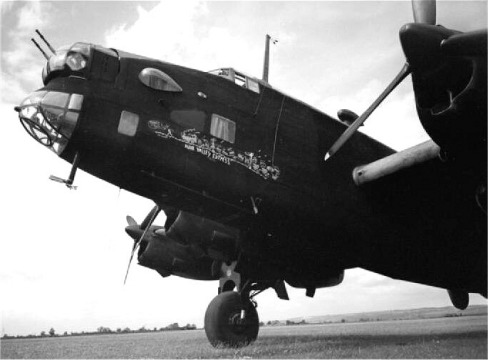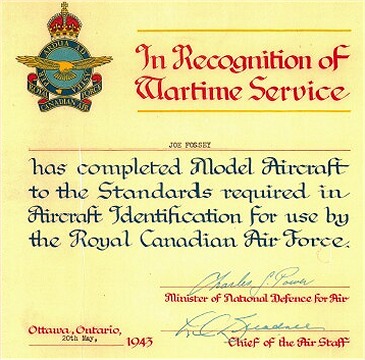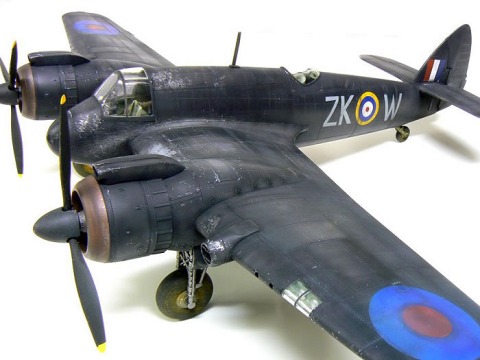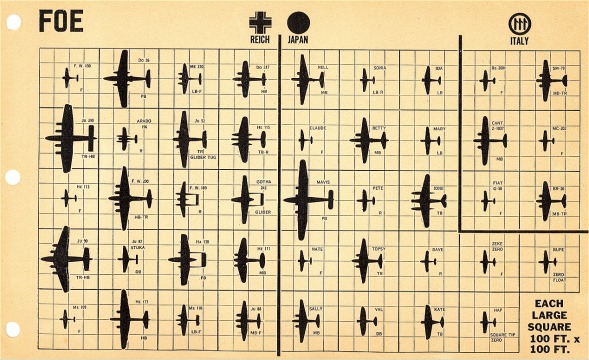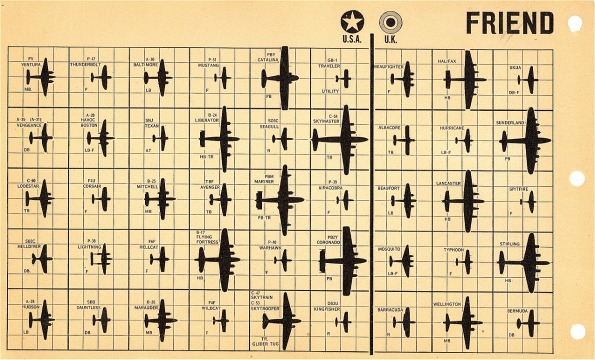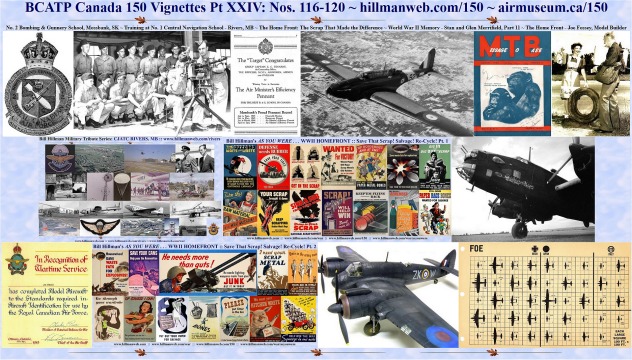117
of 150: Training at No. 1 Central Navigation School - Rivers Manitoba
The following article was published
in the introductory issue of Message To Base – Volume 1, No. 1, August
1943, station magazine of No. 1 Central Navigation School in Rivers Manitoba.
It explains the unique role this school plays in the British Commonwealth
Air Training Plan not only teaching new students the art and science of
navigation, but teaching others to teach navigation in a number of other
BCATP schools.
INTRODUCING G.I.S.
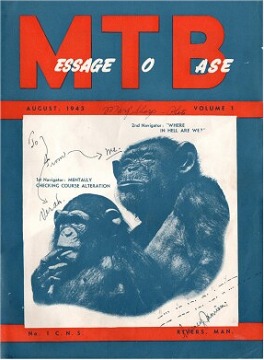 G.I.S.,
which, being interpreted means Ground Instructional School, is the
backbone of No. 1 C.N.S.(Central Navigation School). Therefore it was our
choice this month ahead of all other sections to feature in the initial
issue of M.T.B. (Message to Base). It is our intention to feature
a different section each month with a view to familiarizing everyone with
the station as a whole.
G.I.S.,
which, being interpreted means Ground Instructional School, is the
backbone of No. 1 C.N.S.(Central Navigation School). Therefore it was our
choice this month ahead of all other sections to feature in the initial
issue of M.T.B. (Message to Base). It is our intention to feature
a different section each month with a view to familiarizing everyone with
the station as a whole.
G.I.S. is the seat of learning for student navigators
coming to No. 1 C.N.S. for 20 weeks of instruction, as well as for bomb
aimers who come from B. & G. (Bombing & Gunnery) Schools for a
final six week course prior to graduation. In addition, there are four
specialist courses known as the S.N.I.N.'s, SNIP's, N.I.'s and E.O.'s.
SNIN's are graduate navigators who take a one month course here in specialized
subjects and instructional technique. From here they are sent to the various
Air Observer Schools in Canada to give instruction to student navigators.
They are under the supervision of F/L Minton, F/L Murray, and F/O Smith.
The SNIP's are graduate pilots taking a two month course
in navigation, after which they will be sent to Service Flying Training
Schools to instruct student pilots in navigation methods. F/O Watson and
F/O Maxwell are in charge of these courses. The N.I.'s come mostly direct
from Manning Depots for a 14 week course in navigation, following which
they are posted to Initial Training Schools. In charge of them are F/L
Weaver and F/L Solin. The E.O.'s are educational officers who come to us
from I.T.S.'s for a two month course in navigation. F/L Wellbourne and
F/O Tanner are the officers in charge of this course.
There are a large number of student navigators under training
at all times, for the most part members of the R.A.F. (Royal Air Force),
and in addition, several Air Bomber courses. Each of these courses is supervised
by a navigation instructor who is responsible not only for their instruction
but also for their general welfare, recreation, and discipline.
The most looked forward to thrill, generally, on the part
of the navigation students is flying. It is quite a surprise to many of
them to find their practical navigation is confined to the Synthetic Dead
Reckoning Trainer for the first four weeks. In these trainers navigators
and Air Bombers learn how to put into practice on the ground the navigation
methods they will be using in the air. The rooms are in total darkness
except for a small light over each table, as in an aircraft, and by use
of projections on the screen they are required to pin-point themselves,
using Topographic maps. They must also familiarize themselves with all
navigation methods. In addition to the normal navigation instruments, the
trainers are equipped with drift recorders, altimeters, air speed indicators,
compasses and radio loops. Even rough weather conditions can be duplicated
in operating the drift recorder. The value of these Synthetic Trainers
is their inexpensiveness in comparison to operating an aircraft. They also
familiarize the students with navigation instruments, methods, etc. They
are a real advantage for the instructors who may watch their students navigate
step by step, correcting on the spot any particular faults.
Everyone on the station is familiar with the sight of
navigators shooting celestial bodies by means of the Sextant. The Sextant
is a very delicate instrument by use of which the altitude of heavenly
bodies may be measured. The time to the nearest second that the shot is
made must be known. By referring to tables a line of position can then
be calculated for use in navigation. To become proficient in the use of
a Sextant the student navigators must take some 450 shots in twenty weeks,
each one of which must be plotted. In the near future student navigators
will be able to navigate under almost perfect air borne conditions in the
new celestial link trainers. In these trainers the celestial bodies are
represented by projections on the ceiling, enabling the students to shoot
them with Sextants.
The big job of supervising these courses is the direct
responsibility of S/L McKillop, C.G.I. (Chief Ground Instructor), the assistant
C.G.I., F/L Derry, and a large staff of instructors. The instructors have
been selected firstly, because of their ability as navigators, and secondly
because they possess the knack of telling others. Some of them are former
teachers, but the majority come from all walks of life. They are doing
a fine job as a body and their work, coupled with the application, industry,
and enthusiasm of the students, results in a steady flow of graduate navigators
from No. 1 C.N.S. every two weeks year in and year out.
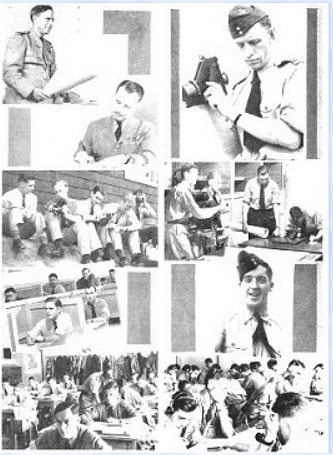 CAPTIONS
CAPTIONS
S/L A. F. McKillopp, Chief Ground Instructor, was snapped in a jovial
mood.
F/L Arthur Hammond, Adjutant of Training Wing.
Shooting the sun in style.
Such comfort couldn't be duplicated in the air, boys.
Bomb Aimers learning to map read on the ground.
F/O Buckley is seen instructing some student navigators.
No.1 C. N. S.
F / L D. R. Derry, Assistant Chief Ground Instructor,
is shown checking his watch just before taking a sun shot.
Learning how to navigate on the ground via the Synthetic D. R. trainer.
Sgt. Dixon needs no introduction at No. 1 C. N. S.
DIDIT - DA - DA - DA ... and so on far into the day.
Cover page caption:
1st Navigator (monkey on the left): MENTALLY CHECKING COURSE ALTERATION;
2nd Navigator (monkey on the right): WHERE IN THE HELL ARE WE?
Peruse our 11 pages of post-war River Base at:
www.hillmanweb.com/rivers
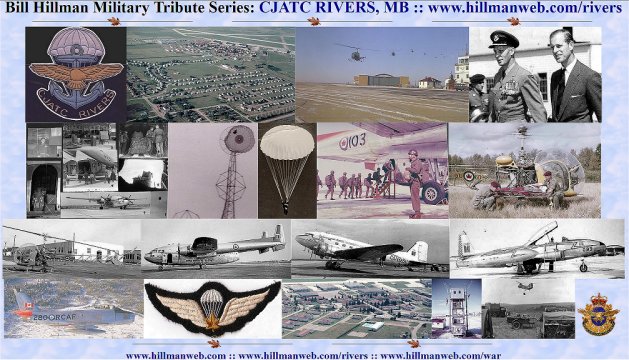
Click for full-size collage
118
of 150: The Home Front: The Scrap That Made the Difference
Legion Magazine, November/December I998
Canadian Reflections – The Scrap That Made a Difference
By James M. Whalen

ln 1982, the first blue box hit the curb in Kitchener, Ont.,
and shortly thereafter the initiative for recycling waste material spread
across Canada. As the three Rs -- Reuse, Recycle and Reduce -- became catchwords
of the environmental movement, Canadians underwent a change in attitude.
Many materials previously thought of as trash were recycled rather than
thrown away. In fact, what happened in the 1980s was strikingly similar
to the recycling fervor that occurred much earlier during WW II.
Early in 1941, the federal government launched the National
Salvage Campaign to encourage patriotism of Canadians on the home front.
But, the Japanese attack on Pearl Harbor in December 1941, the situation
changed because the supply of raw materials from the Pacific was disrupted.
This left North Americans short of rubber, tin, vegetable oil and other
resources.
Similarly, a shortage of Canada's own raw materials gradually
developed due to the lack of manpower to provide them. As the demand for
primary goods for war production increased, the federal government encouraged
Canadians to conserve and salvage various materials for conversion into
airplanes, tanks and other weapons. Although scarcity in Canada during
wartime was not nearly as severe as in Europe, the shortages led the Canadian
government to ration tires, gasoline, alcohol and some foodstuffs.
The National Salvage Campaign operated under the Department
of National War Services with a few paid organizers, including a headquarters
staff of about a dozen, in Ottawa, and about 20 provincial officers. But,
it mainly relied on an army of volunteers who formed voluntary committees
throughout Canada to salvage needed materials. The Department of National
War Services co-ordinated the work of these committees and advised each
group on what was wanted and the prices paid for various materials. The
same department promoted salvage campaigns and informed the public about
collecting scrap by issuing pamphlets, posters, radio and newspaper advertisements.
To encourage the salvage effort, it used catchy slogans such as: Dig In
and Dig Out the Scrap, and Get Into The Scrap.
Salvage committees were required to register with National
War Services under the War Charities Act. Any profits they made had to
be spent on concerts, entertainment, recreation, hospitality, information
centres, canteens and on other war charities.
In several urban municipalities across Canada, voluntary
organizations joined together to form citizens' committees to co-ordinate
all war auxiliary services. One subcommittee of the citizens' group supervised
salvage on a block plan, that is, a particular town or city was divided
into zones or blocks each with a leader. Salvage items were then collected
by following the regular municipal garbage collection, much like the current
recycling pick-up
In March 1942, Charles LaFerle became the director of
the National Salvage Campaign. He had successfully co-ordinated the salvage
efforts of the Toronto Citizens' Committee, and believed that the block
plan was the soundest and most economic way of proceeding. As an example,
he pointed out that the Winnipeg Patriotic Salvage Corps, by using the
block plan, had collected over one million pounds of scrap materials in
a single month. ''The Winnipeg Corps is one of the strongest, most aggressive
and most enterprising of the 1,750 voluntary salvage groups operating throughout
the Dominion," he said.
Besides volunteer citizens' groups, others such as the
Boy Scouts, Girl Guides. Salvation Army and The Canadian Legion salvaged
materials Religious groups, service clubs, women's groups and social
service agencies, as well as women at home and school children, also contributed.
Several individuals used their own vehicles to pick up scrap at a time
when both gasoline and tires were rationed.
Not surprisingly, the determination of some people to
assist in the war effort bordered on the extreme. For example, shortly
after the National Salvage campaign began. Mrs. M.E. Beaddie of the Imperial
Order Daughters of the Empire in Vancouver, and the secretary of that organization's
Memorial Silver Cross Chapter, suggested to her member of Parliament that
the copper plaques presented to mothers and spouses of men killed in WW
I be returned to the government for scrap. "As each plaque represents a
life," she wrote, "we should be very glad if they could ... help save the
lives of our husbands and sons."
In declining the offer, the Hon. Jan Mackenzie emphasized
that the salvage value would not warrant giving up what "must be among
their most treasured possessions."
In September 1941, the Red Cross conducted its own national
campaign for scrap aluminum which was needed for the manufacture of bomber
and fighter planes. Homemakers, school children and others contributed
to this drive. Movie theatres across Canada assisted in a novel way. In
exchange for a scrap of aluminum, a child earned free admittance to a matinee.
In Sydney Mines, N.S., for example, children left some 1,500 worn out aluminum
pots and pans at the cinema's box office.
Scrap dealers often purchased the salvage collected by
voluntary organizations and sent it to smelters and mills for reprocessing.
It was a logical way to proceed because dealers knew how to sort and prepare
materials for disposal. In order to deflect criticism that they were profiting
from the war effort, the scrap dealers, most of whom were Jewish, formed
the Canadian Secondary Materials Association in 1942. The association
co-operated with the government in monitoring the operations of its own
trade.
Besides the Department of National War Services, several
other government or Crown-owned wartime salvage bodies evolved - four within
the armed services alone. But, the most important ones were Crown corporations
such as Wartime Salvage Limited and the Fairmont Company that regulated
collections, set prices, found markets and, at times, purchased certain
essential materials for war production. In order to understand the importance
of some of the salvaged materials during the war, let's take a closer look
at the following items: Iron and steel. oil, fat and bones, rubber and
waste paper.
Iron and Steel
Early in the war, the public learned that scrap iron and
steel could be reused to produce tanks, airplane engines and ships. A parliamentary
committee on war expenditures reported in January 1943 that each soldier
"requires an average of 4,900 pounds of steel in the form of carried or
supported equipment."
In fact, the demand for steel was so crucial that by September
1942, the federal government made it illegal to retain more than 500 pounds
of steel that was not in use. Consequently, most industries scrapped surplus
or obsolete machinery and equipment.
Unwilling to rely on volunteers alone, Wartime Salvage
Limited, the Crown's scrap metal purchaser, established sites throughout
Canada for the deposit of scrap iron and steel. For example, it negotiated
with grain elevator companies in Western Canada to purchase scrap metal
from farmers, voluntary associations and junk dealers "on the spot" for
$7 a ton. Wartime Salvage then paid to ship it by rail to the foundries
and mills mainly located in Central Canada.
Similar subsidies provided for the shipment of scrap metal
from other non-industrial areas of Canada. But, in 1943 and 1944, nearly
200,000 tons of scrap metal came in from Western Canada alone.
Private industry, as well as government and volunteers,
gave farmers a chance to co-operate. Dealers for International Harvester
- a farm implement company - for example, encouraged farmers to donate
their old plows, binders and tractors for war purposes. Otherwise, farmers
received the going scrap rate of $7 a ton.
Through the promotional work of the Department of National
War Services, the response to the iron and steel drive was overwhelming.
By March I944, iron and steel supplies were sufficient and an organized
effort to collect this metal was no longer necessary.
Oil, Fat and Bones
In December 1942, a year after the main supply of vegetable
oil for North America was disrupted by war in the Pacific, the government's
Oil and Fat Administrator launched an appeal for animal fat and bones.
Promoted by the Department of National War Services, and addressed to women
in particular, the campaign even featured a Disney animation entitled Out
of the Frying Pan, Into the Firing Line. As Mickey Mouse and Pluto proudly
carried a can of fat to the butcher, the narrator claimed that: "A skillet
of bacon grease is a little munitions factory" because fat provided glycerine
for making explosives.
Domestic uses to which fat was directed included soap
making and commercial baking. Along with fat, industry wanted bones for
the manufacture of airplane glue and fertilizer. Although the government
paid about four cents a pound for rendered drippings, and one cent a pound
for fat, not enough was collected because it was just too messy for most
homemakers to bother with.
Rubber
Vegetable oil was not the only commodity to be cut off from
North America after the Japanese attacked Pearl Harbor. Crude rubber supplies
were also severely affected. Consequently, Canada restricted its rubber
reserves and reclaimed worn out rubber goods. In 1942, tire rationing for
the general public was applied to everyone except owners of essential vehicles.
The shortage led Canada and the United States to establish Polymer Corporation
to develop synthetic rubber.
Meanwhile, Fairmont Corporation, a Crown corporation that
controlled crude rubber supplies, began buying scrap rubber and stockpiling
it. Simultaneously, National War Services promoted the salvaging of rubber
on a massive scale. While tires for warplanes, army vehicles, and for essential
purposes continued to be produced from high quality rubber, scrap rubber
was mixed with crude rubber to make items for domestic use.
Voluntary salvage committees helped fill the rubber shortage
by taking used tires and tubes, rubber hoses, floor treads and bathing
caps to gasoline stations that served as reclaim centres. Carloads of scrap
rubber arrived at processing plants in Central Canada from across the country
because Fairmont Corporation partially paid the transportation costs.
The post office conducted a very successful scrap rubber
drive in rural areas of Quebec and Ontario in the summer of 1942. In a
fortnight, letter carriers collected over 1,900 tons, including some bumper
pads that over-enthusiastic children tore off docks and wharves much to
the dismay of cottagers.
Canadians were thankful in February 1944 when Polymer
Corporation -- the synthetic rubber company -- came into production. While
synthetic rubber did not replace natural rubber entirely, it nonetheless
meant that the salvaging of reclaim rubber became unnecessary.
Waste Paper
In the fall of 1941, waste paper shortages occurred in Canada
because laborers who normally cut pulpwood were enlisting for military
service. Fearing a shutdown of the pulp and paper industry, National War
Services informed the public and voluntary salvage committees about
the critical need. Wartime Salvage, which controlled the use of waste paper,
as well as scrap metal, set prices and directed supplies to mills that
agreed to pay part of the delivery costs.
By August 1942, the overwhelming response to the call
for waste paper resulted in a surplus of about 1,500 tons. The oversupply
was difficult to dispose of because the United States stopped buying our
waste paper. As the market for old newspapers and cardboard collapsed,
Wartime Salvage bought the surplus from volunteers and sold it to the mills
at a loss rather than harm long-term paper salvaging efforts.
As expected, the market for waste paper changed once again.
By December 1943, Wartime Salvage wanted a minimum of 19,000 tons a month.
National War Services promoted the collection of waste paper throughout
Canada and got good results. Nonetheless, waste paper continued to be desperately
needed. In April 1944. the government increased the demand to 20,000 tons
a month stating that "a shortage may jeopardize our whole war effort."
Well before the June 6, 1944, Allied invasion of Normandy,
the minister of National War Services, General L.R. LaFleche, made it quite
clear that the public would have to collect a lot more paper for
the war effort. "We will need paper containers to be thrown overboard for
landing operations, to carry medical kits, blood plasma, emergency
rations and gas masks. We need paper parachutes to carry food to isolated
men, containers to make liners for such solvents as naphtha and benzene."
Consequently, the response to waste paper drives late
in the war was outstanding. For example, a civil service campaign in Ottawa
netted 458 tons. But that was little as compared to a three-day campaign
held in Toronto in March 1945 when volunteers collected an incredible total
of 1,400 tons.
Even though waste paper shortages continued after VE-Day,
the federal government soon quit the salvage business. However, the government
continued to pay part of the transportation costs for waste paper up to
the end of 1945. With the war over, waste paper was still needed especially
for housing, but supplies of pulpwood and lumber were still short. The
mills became so desperate for supplies that for several months they relied
on their own organization to oversee waste paper collections.
* * *
The war on waste on the home front officially ended in September
1945 when the Salvage Division of National War Services closed. Curiously
enough, during the 4 1/2 years of the division's existence, its headquarters
staff in Ottawa occupied one of the federal government's newest and most
prestigious buildings -- the Supreme Court of Canada, while the judges
remained in dilapidated quarters.
The irony of the situation was not lost on Jean-Francais
Pouillot, the member of Parliament for Temiscouta, Que., who frequently
raised the subject in the House of Commons. and in March 1944 remarked:
"There is no other country in the world where a beautiful and sumptuous
building built for the Supreme and Exchequer Court is serving as offices
for recuperation and salvage bodies, while the old building that would
be fit for recuperation and salvage bodies is serving as the location for
the highest court in this country."
With the return of peace in 1945, salvage operations soon
reverted to a prewar basis -- a multi-million-dollar business conducted
mainly by scrap dealers and as a fund-raiser for a handful of charitable
organizations. Less than a decade later, the public fervor for conserving
and reusing scrap materials had all but vanished. In a 1994 article in
National Geographic magazine, writer Neil Grove observed: "As the postwar
economy boomed and memory of sacrifice faded, our cast-offs graduated to
a country dump."
This is exactly what happened here in Canada and attitudes
did not change until recently. Unlike the early 1940s, it is environmental
concerns. not the necessities of war, that are forcing us to again practise
recycling.
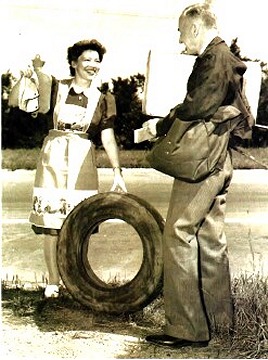
While making his rounds in rural Ontario, a mailman collects items
for wartime recycling.
Scrap rubber was often mixed with crude rubber to make items for
domestic use,
while quality rubber had more specific wartime applications.

SALVAGE POSTER GALLERY
Click for larger full-size images
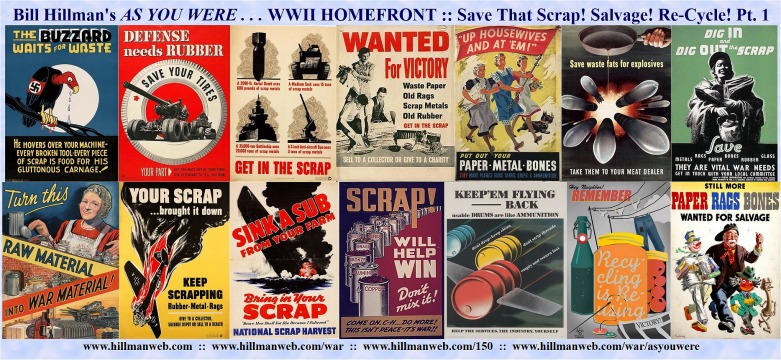

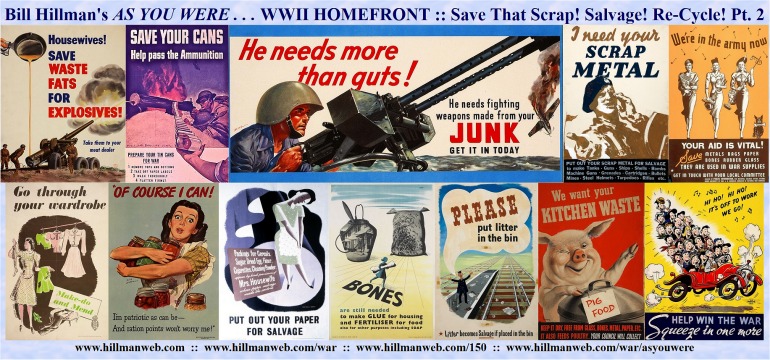

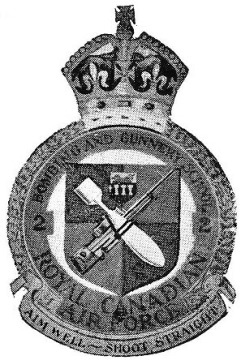
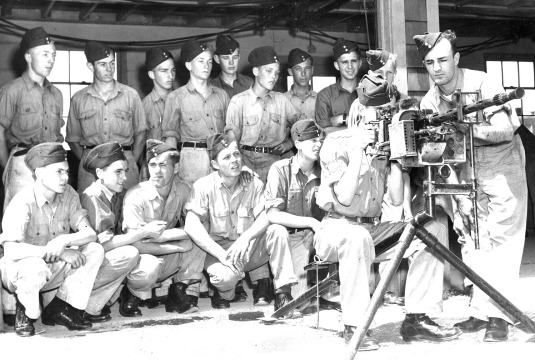
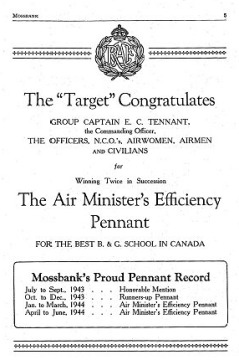
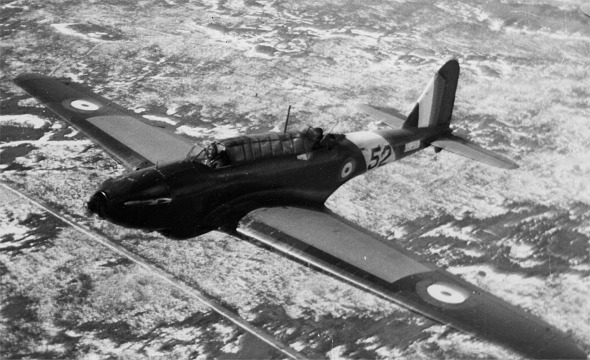
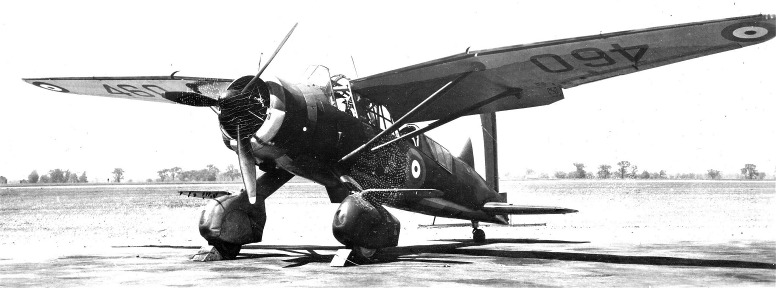
 G.I.S.,
which, being interpreted means Ground Instructional School, is the
backbone of No. 1 C.N.S.(Central Navigation School). Therefore it was our
choice this month ahead of all other sections to feature in the initial
issue of M.T.B. (Message to Base). It is our intention to feature
a different section each month with a view to familiarizing everyone with
the station as a whole.
G.I.S.,
which, being interpreted means Ground Instructional School, is the
backbone of No. 1 C.N.S.(Central Navigation School). Therefore it was our
choice this month ahead of all other sections to feature in the initial
issue of M.T.B. (Message to Base). It is our intention to feature
a different section each month with a view to familiarizing everyone with
the station as a whole.
 CAPTIONS
CAPTIONS






